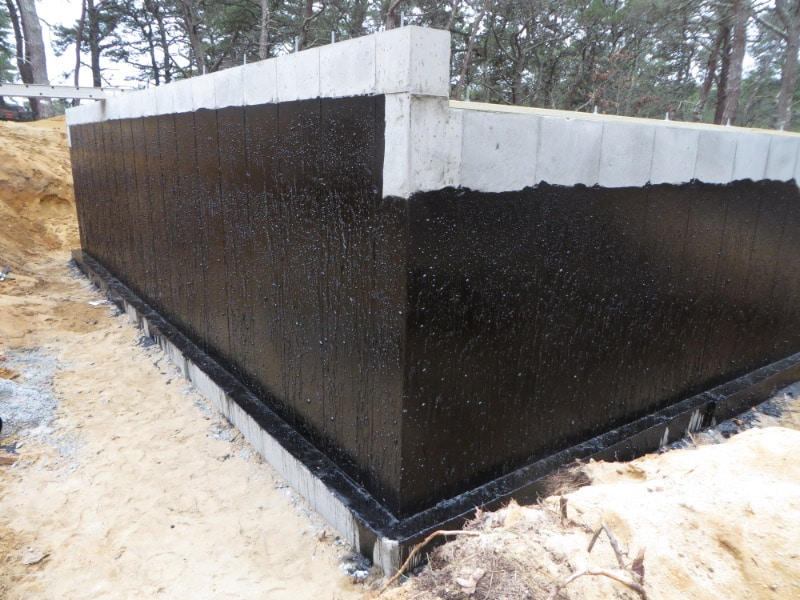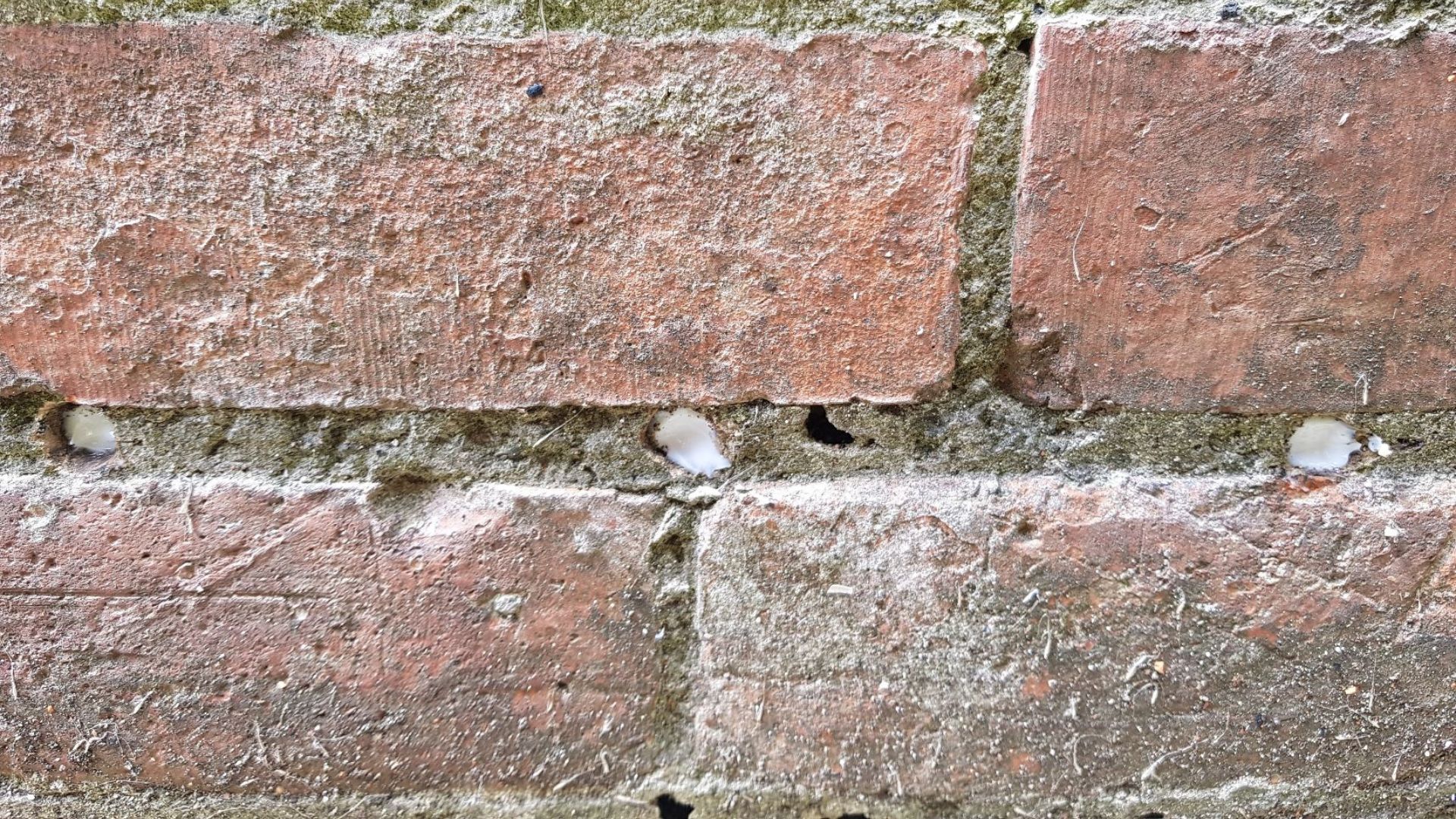What makes professional damp proofing newcastle essential for moisture prevention
What makes professional damp proofing newcastle essential for moisture prevention
Blog Article
Discovering the Different Methods and Solutions for Effective Damp Proofing
Moisture in structures presents substantial obstacles to both architectural honesty and interior air quality. Various techniques and remedies have actually arised to combat this pervasive problem. From typical damp-proof membrane layers to innovative chemical therapies, each technique supplies special advantages. Understanding these options is vital for effective moisture control. Selecting the ideal option depends on certain building problems and needs, triggering more exploration right into the most efficient wet proofing approaches offered.
Understanding the Root Causes Of Dampness
Although wetness can arise from various resources, comprehending these reasons is vital for effective removal. Generally, moisture originates from 3 primary sources: climbing moist, permeating moist, and condensation. Rising moist takes place when groundwater travels up with permeable materials, such as brick or rock, typically as a result of an absence of an effective barrier (mould removal newcastle). Passing through wet is commonly caused by exterior elements, consisting of roofing leakages, damaged seamless gutters, or harmed wall surfaces, permitting water to infiltrate a residential property. Condensation, on the other hand, results from excess moisture airborne, usually exacerbated by bad ventilation and temperature differences, bring about water droplets basing on surfaces. Recognizing these underlying concerns is vital, as each sort of moisture calls for a tailored technique for remediation. Correct analysis assists in identifying the most effective services, ultimately guarding the architectural honesty of a structure and enhancing interior air top quality
Conventional Damp-Proof Membrane Layers

Chemical Damp-Proofing Solutions
Chemical damp-proofing solutions provide an innovative strategy to stopping wetness invasion in buildings. These approaches usually include the application of liquid chemicals that permeate masonry and form an obstacle against increasing damp. Typically made use of chemicals include silanes, siloxanes, and other water-repellent agents that react with surface products to create a hydrophobic layer.The application process typically requires boring holes into the wall surfaces, injecting the chemical solution, and allowing it to treat. This method is specifically beneficial for older structures where typical damp-proof membrane layers might be unwise. Chemical damp-proofing can be much less disruptive and more economical than extensive remodelling projects.While effective, these solutions depend on proper application and ecological problems for peak performance. mould removal newcastle. Normal maintenance and surveillance are necessary to guarantee the durability of the damp-proofing treatment. In general, chemical damp-proofing stands for a flexible option for securing buildings against moisture-related damage
Cavity Wall Surface Building And Construction Strategies
Cavity wall construction techniques offer various advantages, specifically in moisture control and power efficiency. By including an air void between two layers of stonework, these wall surfaces effectively mitigate water ingress while improving insulation. This mix not only protects structures from wetness but likewise adds to lowered power intake.
Benefits of Dental Caries Wall Surfaces
When thinking about reliable moist proofing methods, the benefits of cavity wall surfaces attract attention prominently. Cavity walls include two separate layers, developing an air void that successfully lowers moisture penetration. This style reduces the threat of dampness, as the external wall surface acts as a barrier versus rain and water access. Furthermore, dental caries wall surfaces improve thermal insulation, which adds to power effectiveness by decreasing heat loss. They also provide sound insulation, helping to develop a quieter indoor setting. The air void allows for ventilation, which helps in moisture control and lowers the probability of mold growth. These benefits not just improve the overall convenience of a building but also add to its longevity and structural honesty.
Dampness Control Methods
Effective wetness control methods are crucial in tooth cavity wall surface construction to assure lasting security versus moisture. One main approach involves the unification of weep openings, which facilitate water drainage from the dental caries, stopping build-up. Furthermore, making use of breathable membrane layers can aid take care of moisture degrees while enabling trapped vapor to leave. Proper positioning of insulation is likewise essential, as it must not obstruct drain courses. Additionally, making sure that the external fallen leaves of the cavity wall are built with water-resistant materials improves general sturdiness. Routine maintenance checks are vital to identify any obstructions or damage early, protecting the framework's honesty. Inevitably, a mix of these techniques develops a robust protection versus dampness intrusion in dental caries wall surfaces.
Insulation and Power Efficiency
Insulation plays an important duty in improving energy efficiency within dental caries wall surface construction. By integrating shielding products, these walls produce a thermal obstacle that decreases warmth loss and lowers energy usage. Efficient insulation not just aids maintain a steady interior temperature yet additionally minimizes the threat of wetness, as it stops condensation within the wall surface dental caries. Numerous techniques, such as the use of inflexible foam boards or mineral wool, can be employed to achieve perfect insulation efficiency. In addition, appropriate installment is important to guarantee that spaces and spaces are lessened, which can otherwise compromise energy performance. Eventually, a well-insulated cavity wall adds substantially to general sustainability and lowers mould removal newcastle cooling and heating prices for home owners.
Outside Damp Proofing Techniques
Outside moist proofing methods are necessary for safeguarding structures from wetness seepage. 2 reliable strategies include the application of water-proof membranes and the installment of French drains pipes. These options help minimize water build-up and maintain the honesty of buildings.
Waterproof Membrane Layer Application
While various approaches exist for stopping wetness access, the application of water resistant membrane layers remains a very efficient outside damp proofing strategy. These membranes are normally made from products such as polyethylene, rubber, or changed asphalt, giving a durable barrier against water infiltration. The setup procedure entails using the membrane to the outside surfaces of wall surfaces or structures, guaranteeing full protection to avoid leakages. Appropriate attachment and sealing at joints are important to taking full advantage of performance. Water resistant membrane layers can be used in different kinds, consisting of liquid finishings and sheet membrane layers, allowing for flexibility based upon the details demands of the framework. This technique not only secures structures from moisture however also boosts their durability and structural stability.
French Drain Setup
One reliable technique for handling groundwater and protecting against dampness accumulation around a structure's structure is the installment of a French drainpipe. This drainage system is composed of a trench loaded with gravel and a perforated pipeline that reroutes surface area water away from the foundation. Appropriate installation requires careful preparation, ensuring that the drain inclines far from the framework to facilitate excellent water circulation. Furthermore, the place of the drainpipe is essential; it must be placed in areas vulnerable to merging or excess dampness. Regular upkeep, including clearing debris from the crushed rock and guaranteeing the pipeline stays unhampered, is essential for long-term performance. Eventually, a well-installed French drain can substantially lower the risk of water-related issues in foundations and basements.
Interior Waterproofing Strategies
Inside waterproofing methods are essential for protecting a structure's inside from dampness infiltration and potential water damages. These strategies usually include the application of specialized products and strategies developed to create a dampness obstacle within the structure. One typical approach is using waterproof finishings or sealers on wall surfaces and floors, which prevent dampness from permeating surfaces.Additionally, mounting interior water drainage systems, such as sump pumps, can successfully manage water accumulation in basements and creep areas. One more approach includes using vapor obstacles, which are mounted to hinder moisture movement from the ground into living spaces.Moreover, dealing with any type of splits or spaces in walls or structures with proper sealants assures a complete defense against water breach. By implementing these interior waterproofing approaches, property proprietors can considerably minimize the threat of mold and mildew growth, architectural damages, and various other moisture-related issues. Proper execution of these strategies is crucial for long-term security and structure stability.
Regular Maintenance and Evaluation Practices
Routine upkeep and assessment practices are crucial for assuring the lasting effectiveness of wet proofing solutions in any type of building. Routine checks allow home owners to identify very early indicators of moisture intrusion, such as peeling paint, mold and mildew growth, and mildewy smells. These indicators can indicate underlying problems that need prompt attention.Inspections ought to be performed at least annually, concentrating on prone areas like cellars, crawl spaces, and outside walls. During these evaluations, homeowner need to take a look at sealants, drain systems, and air flow to verify they work correctly.Additionally, keeping downspouts and rain gutters is vital, as clogged systems can bring about water accumulation near the foundation. Executing a regular upkeep timetable, together with timely repair work, can substantially expand the lifespan of damp proofing steps and secure the structural integrity of the building. Positive steps inevitably add to the total health and wellness of the living setting.
Often Asked Questions
For How Long Does Damp Proofing Generally Last?
The duration of wet proofing performance varies, normally lasting in between 20 to half a century. Aspects such as application quality, ecological conditions, and maintenance practices significantly influence the durability of the damp proofing treatment.

Can I Damp Proof My Home Myself?
The private considered the feasibility of DIY damp proofing. With appropriate study and the ideal products, it is possible. However, they likewise acknowledged the relevance of expert assistance to guarantee durable performance and avoid future problems.
What Are the Signs of Inefficient Damp Proofing?
Indications of inadequate moist proofing consist of persistent stuffy odors, noticeable mold and mildew growth, peeling paint, moist patches on walls, and timber degeneration - damp specialist newcastle. Homeowners must address these issues promptly to avoid further damages and wellness problems
Does Damp Proofing Affect Indoor Air High Quality?

Just How Much Does Specialist Damp Proofing Price?
Specialist damp proofing expenses differ substantially, normally varying from $1,000 to $5,000 depending on the residential or commercial property's dimension, the extent of the moist problem, and picked techniques. Each situation requires a tailored evaluation for exact rates. Commonly, dampness originates from three key sources: climbing moist, permeating moist, and condensation. When considering efficient damp proofing methods, the advantages of dental caries wall surfaces stand out prominently. External damp proofing methods are important for shielding frameworks from wetness infiltration. While different approaches exist for avoiding wetness access, the application of water-proof membranes continues to be a very efficient outside wet proofing method. Indicators of inefficient damp proofing include consistent stuffy smells, noticeable mold and mildew growth, peeling off paint, moist patches on walls, and timber degeneration.
Report this page